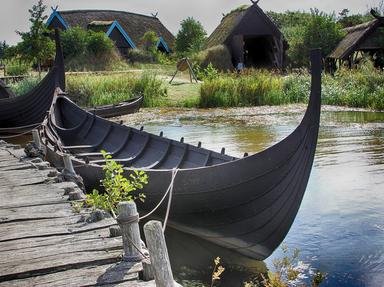Quiz Answer Key and Fun Facts
1. The Catholic Church has generally taught that clergy were to be non-violent.
2. An attack by the Northmen in 793 AD on the monastery at Lindisfarne is considered to be the beginning of the Viking Age. Where in England is Lindisfarne located?
3. Why was a monastery a prime target for Viking raids?
4. The Vikings completely destroyed the monastery and settlement on Lindisfarne.
5. Which great scholar, a member of Charlemagne's court, wrote to King Aethelred after hearing of the Viking attack on Lindesfarne?
6. Odo, the Bishop of Bayeux, wanted to take part in the Norman invasion of England. Who was his more famous half-brother who led the attack?
7. Odo, Bishop of Bayeux, was able to fight in the Norman conquest of England because he found a "loophole" in the shedding of blood rule for the clergy. What weapon did he use?
8. After realizing that they needed to keep watch for Viking raiders, the monks began to build round lookout towers. What are these towers commonly called?
9. What feature of the tower made it especially effective against Viking raiders?
10. Those resourceful monks, who were not allowed to shed Viking blood, also raised which large dogs to turn loose on the raiders?
Source: Author
ponycargirl
This quiz was reviewed by FunTrivia editor
bloomsby before going online.
Any errors found in FunTrivia content are routinely corrected through our feedback system.

